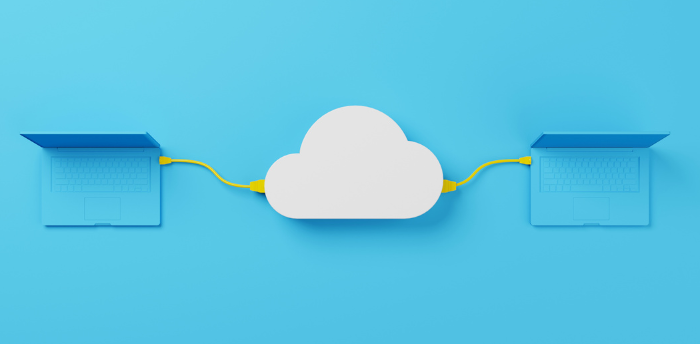Share
Author
George Anderson
Share
B2B eCommerce is doing gangbusters. Manufacturers grew digital revenue 18.4% in 2021 (DigitalCommerce360), while Corevist clients grew it 27.2%.
Clearly, manufacturers’ customers love B2B eCommerce.
But not every organization can imagine themselves getting a slice of that pie. Complicated products, opaque business rules, and legacy processes make B2B eCommerce feel like the impossible dream—or even a solution in search of a problem.
Nothing could be further from the truth. In fact, B2B portals and eCommerce offer unique benefits to every type of customer that manufacturers serve. Here’s a quick look at 3 high-level customer segments and how they typically use B2B eCommerce.
Large customers who order via EDI
For many manufacturers, their biggest customers will never stop using EDI. It’s the legacy system for order placement, and both the manufacturer and the customer have built processes around it on both ends.
While this customer segment may never place an order through B2B eCommerce, they do have online needs.
How do they track orders, shipments, and invoices today? How do they pay off invoices and keep their credit balance in a healthy place?
Chances are, you rely on phone, fax, email, and snail mail to maintain relationships with these customers. Unfortunately, these manual processes require human intervention at every step. The cost may look acceptable because these customers create so much revenue—but that doesn’t mean you can’t get more efficient.
EDI customers can use a B2B portal to track orders, pay off invoices, and grab one-off purchases via credit card. They can also use the portal to look up product availability by SKU (even personalized availability) before placing an EDI order. This reduces order errors and manual callbacks.
For your EDI customers, a B2B portal makes you easier to do business with—and it reduces your customer service workload for post-order inquiries.
FREE whitepaper
7 Best Practices For B2B Customer Portals
Start with a goal of reducing phone, fax, and email inquiries—and put the voice of the customer first. But don’t create more work for IT.
Recommended functionality:
- Real-time product availability
- Real-time order status and history
- Real-time shipment status and tracking number integration
- Real-time invoice status and history
- Self-service capability to select and pay off invoices online
Long-tail customers who will never adopt EDI
Not every B2B customer can afford the investment in EDI technology. Some will buy from you only casually, and they may know less about your offerings.
These “long-tail” customers—those who purchase smaller amounts less frequently—can add up to a sizeable potential revenue segment. Your biggest customers naturally get the most attention from sales and customer service, but this means you’re leaving business on the table with long-tail customers.
That’s especially true if you don’t offer a self-service destination for product education, purchasing, and order tracking.
B2B eCommerce is a great answer here. With real-time availability, personalized pricing, and educational content, B2B eCommerce empowers your smaller customers to explore your products and get a much bigger picture of your comprehensive value. When you empower your marketing efforts with a self-service destination, you expose your offering to many more customers—without investing human time from sales and customer service.
What’s more, B2B eCommerce allows you to scale revenue from this customer segment without scaling costs. When long-tail customers place orders through self-service, you avoid increasing the number of phone, fax, and email orders that your reps have to process. It’s a lean, efficient way to reach your most neglected customers.
Recommended functionality:
- Educational product content (images, videos, spec sheets, how-to manuals, and so on)
- Real-time product availability
- Real-time pricing
- Option to pay with a credit card at checkout
Dealers and dealer lookalikes
Not every manufacturer has dealers as such. However, in many markets, there’s a B2B customer type that functions as a dealer because they interact with the end consumer, whether remotely or face-to-face. They could be a literal dealer, like a car repair shop that buys parts as needed. Or they could be a doctor’s office making one-off purchases when patients need specific medical equipment or therapies.
If your dealers sell only your products, then B2B eCommerce is a great way to increase sell-through. Rich product content, real-time availability, and related products educate your dealers on the depth of your offerings. This empowers them to make the best decision for the customer in front of them.
If your dealers also sell products from your competitors, B2B eCommerce is essential to defend your market share. Your buying experience should be easier than that of your competitors, and you should provide full transparency (like personalized pricing and real-time availability) in addition to robust product content. All this makes you the go-to supplier when the dealer has a tough challenge in front of them.
Recommended functionality:
- Customer account selection for on-behalf-of ordering
- Drop shipping options
- Rich product content that the dealer can show the customer
- User hierarchies that allow you to hide pricing if necessary
The takeaway
In B2B eCommerce, there’s no such thing as one-size-fits-all. Every manufacturer has a unique product/market fit, plus unique needs among their customers. The key is to identify your unique opportunities for revenue growth and cost cutting—then tackle them with a B2B platform that’s flexible and built to iterate fast. This is the thinking behind the Corevist Platform.
FREE whitepaper
7 Best Practices For B2B Customer Portals
Start with a goal of reducing phone, fax, and email inquiries—and put the voice of the customer first. But don’t create more work for IT.










